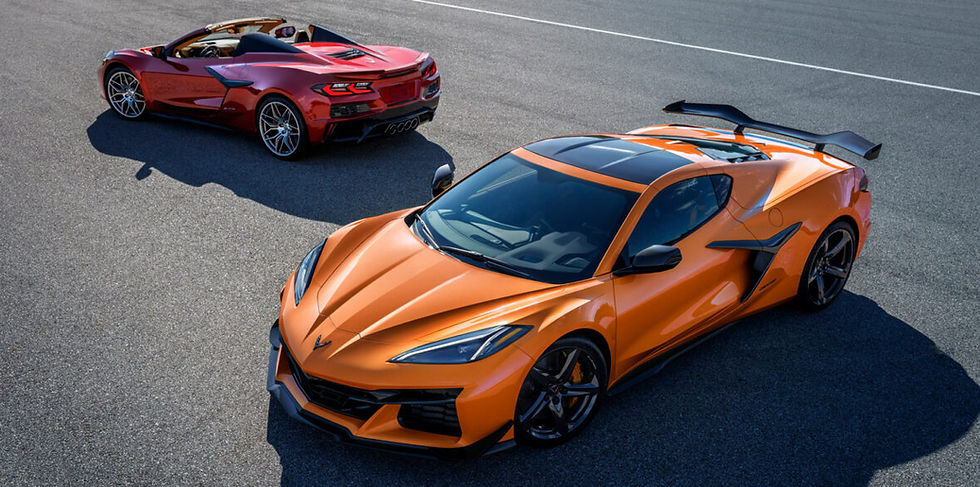Chevrolet Corvette C2 (1963-1967): The Sting Ray Era
- Johnny Fast

- Jan 25, 2024
- 3 min read
Updated: Oct 17, 2024
Introduction
The Chevrolet Corvette C2, known as the Sting Ray, marked a significant evolution in the Corvette lineage. Introduced in 1963, the C2 Corvette brought a combination of striking design, advanced engineering, and high performance that set new standards for American sports cars. This generation solidified the Corvette’s status as a true competitor on the global stage, blending style and substance in a way that captivated enthusiasts and critics alike.
Engine and Performance
Early Models
The C2 debuted with a range of powerful engines, starting with the 327 cubic inch (5.4L) V8, available in multiple power outputs ranging from 250 to 360 horsepower. The top-tier fuel-injected version delivered an impressive 360 horsepower, showcasing Chevrolet's commitment to performance. This engine, combined with a choice of manual or automatic transmissions, provided a thrilling driving experience.
Later Models
In 1965, the Corvette lineup expanded to include the legendary 396 cubic inch (6.5L) big-block V8, producing 425 horsepower. This addition significantly boosted the Corvette's performance capabilities. By 1966, the engine options included the 427 cubic inch (7.0L) V8, with power outputs reaching up to 435 horsepower in the L88 variant. These high-performance engines made the C2 a formidable presence on both the street and the track.
Design and Features
Exterior
The C2 Corvette’s design was a radical departure from its predecessor, featuring a more aggressive and aerodynamic shape. The 1963 model year introduced the iconic split rear window, which became an instant classic despite being discontinued in 1964 due to visibility concerns. The Sting Ray's sleek lines, hidden headlights, and muscular fenders set a new standard for American sports car design. The 1965 model year saw the addition of functional hood vents and side exhaust pipes, enhancing both aesthetics and performance.
Interior
Inside, the C2 offered a more refined and driver-focused cockpit. The dashboard was redesigned with a dual-cowl layout, providing improved ergonomics and instrumentation. Bucket seats, higher-quality materials, and optional features such as air conditioning and power windows added to the car’s appeal. The emphasis on driver engagement and comfort was evident in every detail, making the Sting Ray a pleasure to drive.
Market Impact
Reception
The Corvette C2 was met with widespread acclaim upon its release. Critics and enthusiasts praised its bold design, advanced engineering, and exceptional performance. The introduction of the big-block V8 engines further cemented its reputation as a high-performance sports car. The Sting Ray quickly became a favorite among car enthusiasts, earning its place as a cultural icon of the 1960s.
Collectibility
Today, the C2 Corvette is one of the most sought-after models in the classic car market. Early split-window coupes, high-performance big-block variants, and limited-production models like the L88 are particularly prized by collectors. The Sting Ray’s combination of iconic design, historical significance, and exhilarating performance make it a highly desirable classic.
Conclusion
The Chevrolet Corvette C2 (1963-1967) represents a golden era in American automotive history. Its introduction of the Sting Ray design, combined with powerful engines and advanced engineering, set a new benchmark for performance and style. The C2’s enduring legacy is a testament to Chevrolet’s commitment to innovation and excellence. As one of the most iconic and beloved generations of the Corvette, the Sting Ray continues to inspire and captivate car enthusiasts around the world.
➱ Company Website:: CHEVROLET
COPYRIGHT/DISCLAIMER:
REPORT ERRORS or ADD INFORMATION:



